
NEW! Seeds for our year-round seed library have arrived and are now available to borrow at Central Branch, 1st floor.
Borrow seeds to grow your own healthy food and contribute to a sustainable community—it’s 1-2-3 easy with your Burlington Public Library card. Here's how our seed library works:
- Browse & Borrow... Select what plants you’d like to grow—you can select up to three "try-it" sample-size seed packets per family. Please see a staff member to check out your seeds.
- Sow & Grow... Plant, tend, and enjoy your crop
- Reap & Return... If you are able, harvest new seeds and return them to the library, packaged (we explain how!) to be borrowed by local gardeners next growing season.
Seasonal seeds are available at all BPL branches every spring, while supplies last.
Seeds For Every Gardener
With so many possibilities, you might wonder which seeds best suit your skills and interests. Our handy guide will help you have the best gardening experience.
🌼 Curious: (Re)Discover the joys of gardening! These seeds are easy to sow and the plants need basic care, like watering and weeding. They are great for everyone—from beginners to experienced gardeners.
🌼🌼 Comfortable: These seeds and plants need some tender loving care and are perfect for gardeners with 1-2 successful growing seasons or adventurous new gardeners.
🌼🌼🌼 Confident: You're up for a growing challenge! These seeds and plants need patience and regular care to reach their full potential—but the extra effort is worth it!
Seed Types Available Year-Round
While most seeds are available only at the start of the current outdoor growing season, we have a small selection of seeds that you can borrow year-round as supplies last.
Chives
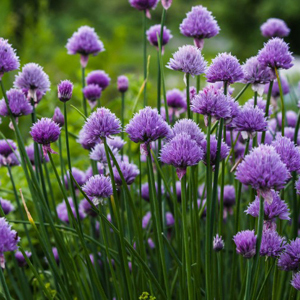
🌼 - Curious. The green stalks add a mild onion flavour to salads, soups, and more. You can eat the purple flowers too.
Chives are a perennial member of the onion family that sport beautiful edible flowers. This herb is cold-tolerant and best planted in early to mid-spring. It can also be grown indoors in containers.
How to grow: 60 days to harvest. Create a small trench in the soil 1-1/2cm (1/2") deep and disperse seeds; lightly cover. Full sun.
Lettuce
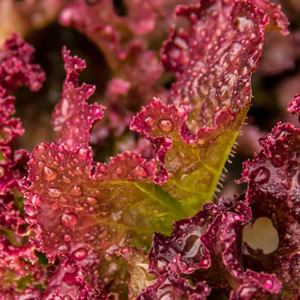
🌼 - Curious. Lettuce is a cool-season crop that grows well in the spring and fall in most regions.
Our seed library offers three varieties:
Lola Rossa has full, frilly leaves that are clear dark red from edge to base. Perfect for garnishing or adding visual interest to a salad blend. 50-60 days to harvest.
Romaine lettuce with crisp green leaves and a sweet flavour. 72 days to harvest.
Buttercrunch is a popular and time-proven variety, with thick green outer leaves and a sweet, cream-coloured, compact head. A mild-flavoured lettuce with a crunch. Excellent for lettuce wraps! 55 days to harvest.
How to grow: Create a small trench in the soil 1/3cm (1/8") deep and disperse seeds; lightly cover. Full sun.
Oregano
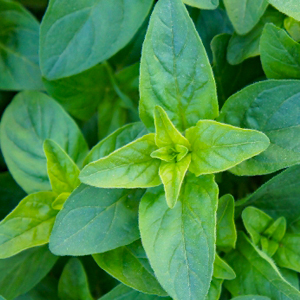
🌼 - Curious. Sometimes called wild marjoram, oregano is a woody perennial culinary herb and a fragrant and pollinator-friendly ornamental plant. It's easy to grow in planters indoors or as outdoor ground cover. Oregano is self-seeding and spreads easily. An excellent companion plant for tomatoes and peppers.
How to grow: Create a small trench in the soil 1/2cm (1/4") deep and disperse seeds, but don't cover them with soil as they need light to germinate. Thin plants to 30cm (12") apart; harvest just before the flowers form for the best flavour. 45 days to harvest. Full sun.
Parsley
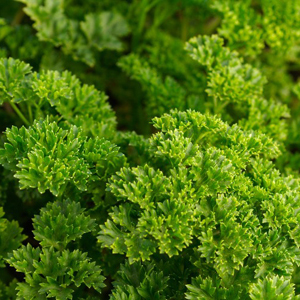
🌼 - Curious. Curly leaf parsley adds a clean and earthy flavour to salads and other culinary dishes. Use as a garnish and in salads and cooking. It performs well indoors and outdoors—in planters and the field, allowing for multiple cuttings per season from one planting. Upright leaves make harvesting easy. Tolerates light frost.
How to grow: 80 days to harvest. Create a small trench in the soil 1/3cm (1/8") deep and disperse seeds; lightly cover. Full sun.
Spring Planting 2025
Along with the year-round seeds, we offer seasonal seed types in the early spring on a first-come, first-served basis until our supply runs out. The selection of seed types changes every year. Seasonal seeds will be available to borrow starting Tuesday, April 1.
Acorn Squash
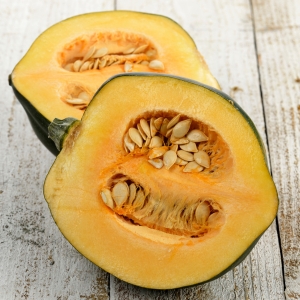
🌼🌼 - Comfortable. Also called winter squash, acorn squash is distinctive in its acorn shape, with longitudinal ridges and butter-coloured flesh. These winter squashes are grown on productive, semi-bush plants. They're a good source of fibre, vitamins A and C, and minerals.
How to grow: 71 days to harvest. Sow seeds 1-1/2cm (1/2") deep, ~90cm (3') apart. Full sun.
Aster
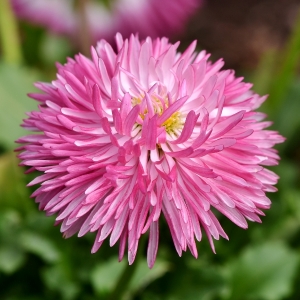
🌼 - Curious. With vibrant hues and delicate petals, the Powderpuff Bouquet aster (also commonly known as China Aster) attracts butterflies and bees, promoting pollination. Lovely bouquet-type habit makes it an excellent cut flower. Resists wilt. By picking off faded blooms you will prolong the flowering season.
How to grow: Start indoors or sow the seed directly on warm soil a week after the last frost, 1-1/2cm (1/2") deep; very lightly rake in. Half-shade to full sun.
Basil
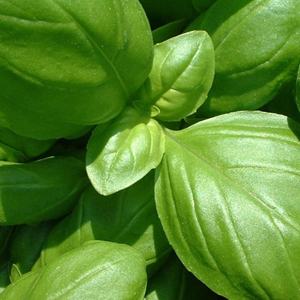
🌼 - Curious. A fragrant and tasty herb, basil thrives in rich, moist, well-drained soil with full sun. It's perfect for containers. The most widely known and often-used basil, Sweet (or Italian) basil is great in tomato, egg, and cheese dishes. Also used in sauces, soups and stews.
How to grow: 85 days to harvest. Direct seed in soil 1/3cm (1/8") deep. Full sun.
Beans
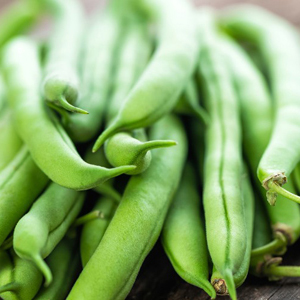
🌼 - Curious. Green bush beans are an excellent source of vitamins A and C and dietary fibre. This bush-type plant produces excellent yields of 8" long by ½" wide green beans. Antigua bush beans have excellent flavour and are tender. They can be used fresh, canned, or frozen.
How to grow: 55 days to harvest. Sow seeds 2-1/2cm (1") deep in warm soil, 10cm (4") apart, cover lightly with soil. Full sun.
Calendula
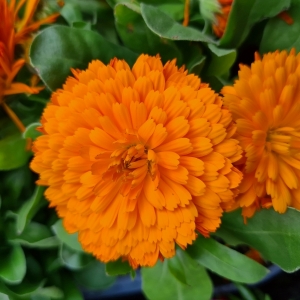
🌼 - Curious. Calendula Fruit Burst is a mix of double flowers in yellow, deep orange and apricot with light and dark centers. These contrasting colours will make your garden burst and look great as cut flowers. They are a beautiful addition to gardens, pots, bouquets or used as a garnish for your salad.
How to grow: Start indoors or sow directly a week before the last frost. Sow 1/2cm (1/4") deep and 5-10cm (2-4") apart. Half-shade to full sun.
Carrots
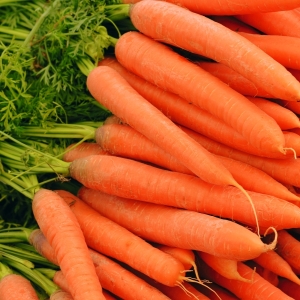
🌼🌼🌼 - Confident. Scarlet Nantes is the most popular and dependable home garden carrot variety. Roots are sweet and tender yet incredibly crisp. Bright orange in colour and nearly coreless, these are ideal for freezing.
How to grow: 68 days to harvest. Make shallow rows 1-1/2cm (1/2") deep and 30cm (12") apart. Place seed tape onto row; water thoroughly; cover with soil and water again. Full sun.
Chamomile
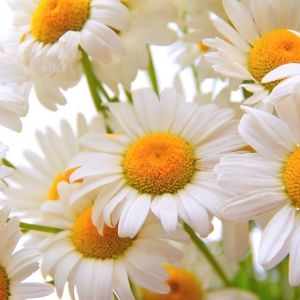
🌼 - Curious. These miniature daisy-like flowers are commonly grown and dried for teas, essential oils, and balms. The tiny white flowers are sweet-smelling and prolific.
How to grow: Sow seeds 1-1/2cm (1/2") deep, 12-1/2cm (5") apart, lightly cover. Full sun. Harvest flowers when fully open; use petals fresh or dry.
Corn
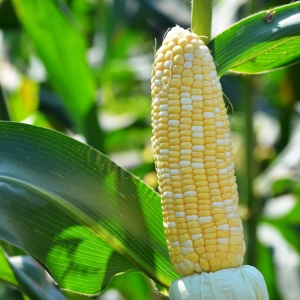
🌼🌼🌼 - Confident. Peaches & Cream (also called Honey & Cream) corn has earned its popularity for its gourmet flavour, sweetness, and tender, fine kernels. Cobs are approximately 12" in length and have rows of white and gold kernels. They are a must for any garden!
How to grow: 70 days to harvest. Sow seeds 2-1/2-5cm (1-2") deep; 7-1/2cm (3") apart. Full sun.
Cucumber
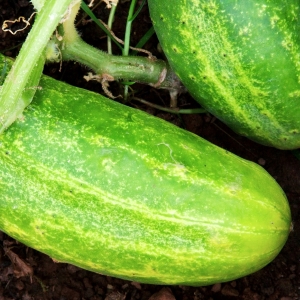
🌼 - Curious. For many years cucumbers have been a main item in many home gardens. High in purified water, they contain numerous minerals, particularly magnesium and phosphorus, and vitamins A & C.
Boston Pickling is an old heirloom cucumber variety dating back to 1880. Vigorous vines give large yields of smooth green fruit. It's excellent for pickles, being very crisp and good quality. A very popular variety at the turn of the 20th century.
How to grow: 50-75 days to harvest. Plant 1-1/2 cm (1/2") deep, 30cm (12") apart, lightly cover with soil. Full sun.
The Marketmore variety produces uniform, dark green fruits about 8–9 inches long, with tender skin and a mild, sweet taste. A high-yielding, open-pollinated cucumber.
How to grow: 65-75 days to harvest. Sow seeds 2cm (3/4") and 120-150cm (47-60") apart. Full sun.
Dill
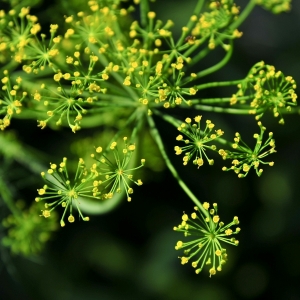
🌼 - Curious. Long Island Mammoth dill is known for its towering height and incredibly flavourful foliage. This fragrant variety is a favorite among home gardeners and chefs alike.
How to grow: 70 days to harvest. Sow seeds 1/2cm (1/4"), 30cm (12") apart, and lightly cover. Full sun.
Lavender
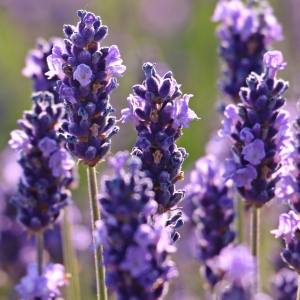
🌼🌼🌼 - Confident. English Ellagance purple lavender has striking, bright purple blooms and silvery grey foliage. It emits the lovely fragrance we all love and is perfect for any sunny part of the garden.
How to grow: Start seeds indoors until rooted. Transplant into warm, wet soil. Full sun.
Nasturtium
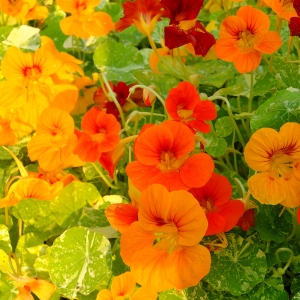
🌼 - Curious. Whirlybird nasturtium has large, spurless semi-double blooms in seven brilliant colours. The plant is dwarf, compact and non-trailing. The blossoms are edible!
How to grow: Directly sow in the ground a week after the last frost, 1-1/2cm (1/2") deep and keep moist. Half-shade to full sun.
Peas
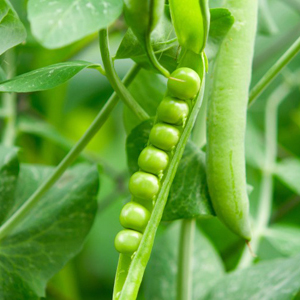
🌼 - Curious. Two varieties are available. Peas are relatively easy to grow with few diseases or bug problems.
Grundy-Perfect Arrow peas are tasty and sweet and tolerate cool and warm conditions. These strong plants produce high yields of 10cm (4") pods. Excellent for eating fresh
Super Sugar Snap peas are like candy off the vine. These peas have dark green, slightly curved edible pods and a longer picking window than most.
How to grow both varieties: 65 days to harvest. Sow seeds 4cm (1-1/2") deep, 2-1/2cm (1") apart, cover lightly with soil. Full sun
Peppers
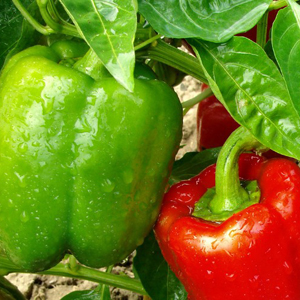
🌼🌼🌼 - Confident. Two varieties are available. California Wonder produces large 10 x 10cm (4" x 4") bell-shaped fruit. The texture is crisp and crunchy. Great raw and for all types of cooking—excellent for stuffing! Peppers can be harvested when green or later, as they mature to red.
How to grow: 75-80 days to harvest. Sow seeds 1/3cm (1/8") deep, 1m (3') apart, lightly cover. Full sun.
Bright Star peppers are bright orange in colour, with a pleasant, sweet, crisp flavour. The plant produces blocky, 7-10cm (3-4"), mostly four-lobed fruits.
How to grow: 75 days to harvest. Start seeds indoors; plant seedlings 46cm (18") apart. Full sun.
Poppy
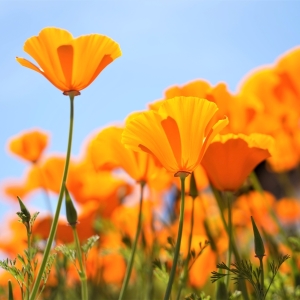
🌼 - Curious. This cheery poppy variety, California Eschscholtzia, offers tons of dainty, double flowers in pink, scarlet, copper, orange and yellow are produced on this very free flowering heirloom flower.
How to grow: Sow the seed directly on warm soil 6mm (1/4") deep and 15-25cm (6-10") apart. Full sun.
Pumpkin
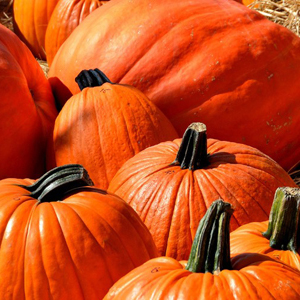
🌼🌼 - Comfortable. Grow your own Halloween pumpkin this year! The Aspen Hybrid variety is an ideal Halloween pumpkin, growing large with thick stems and burnt orange skin. This semi-bush plant grows 10-20 lb pumpkins.
How to grow: 95 days to harvest. Sow seeds 2-1/2cm (1") deep, 12-1/2cm (5") apart, cover lightly. Full sun.
Radish
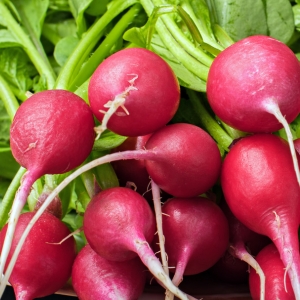
🌼 - Curious. Despite their size, the Garden Giant radish variety does not get woody or spongy, but instead, these scarlet-red skinned globes produce a crisp white flesh that will be thoroughly enjoyed. It’s an excellent choice for gardeners seeking a reliable, delicious addition to salads, pickles, and snacks.
Sparkler White Tip radish grows 4.5 cm (1-3/4") nearly round scarlet roots with white tips. These crisp radishes snap with a delightful peppery flavour for spice-craving taste buds. This cool weather crop is also an excellent keeper.
How to grow both varieties: 25-28 days to harvest. Sow 1-1/2cm (1/2") deep and 5cm (2") apart. Full sun.
Spinach

🌼 - Curious. Olympia Hybrid spinach is one of the best dark green plain leaf types for year-round sowing and harvest. This fast-growing spinach holds its leaves up off the ground and is an excellent choice for cooking and salads.
How to grow: 45-50 days to harvest. Sow seeds 1-1/2cm (1/2") deep and 25cm (10") apart. Full sun.
Sunflower
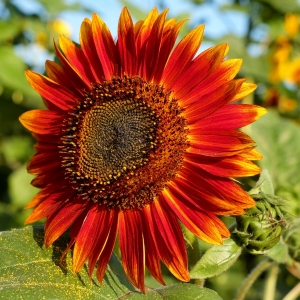
🌼 - Curious. Colour Fashion sunflowers are a stunning variety known for their vibrant and varied hues. These sunflowers boast a kaleidoscope of colours, ranging from rich yellows to deep oranges and even hints of reds and browns.
How to grow: Start indoors or directly sow seed in soil a week after the last frost. Plant about 12mm (1/2") deep and 7-1/2-10cm (3-4") apart. Full sun.
Tomatoes
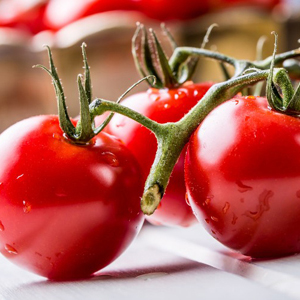
🌼🌼 - Comfortable. Looking for a great sandwich or hamburger tomato? Look no further than the Big Beef tomato. Support is required with a tomato cage, stake, or trellis.
How to grow: 73 days to harvest. Sow seeds 1/2cm (1/4") deep, ~60cm (24") apart, and lightly cover. Full sun.
Sweet Million cherry tomatoes offer early maturing clusters of tiny bright red tomatoes that are well-rounded and delicious. Instead of having one large harvest at once, they bear over a period of months. These are perfect for home gardeners who want to spread out their harvest.
How to grow: 60-65 days to harvest. Sow 1/2cm (1/4") deep and ~60-90cm (24-36") apart. Full sun.
Zucchini
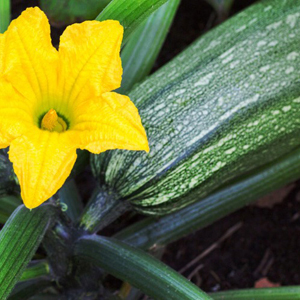
🌼 - Curious. Also known as summer squash and courgette. Dark Green zucchini is the most popular and versatile squash. This cylindrical fruit 15–18 cm (6-7") in length is very easy to grow. The creamy white flesh is firm, flavourful, and terrific for baking nutritious cakes, breads, or muffins. Also, great raw and sautéed. Even the flowers are edible!
How to grow: 50-55 days to harvest. Plant directly 2-1/2cm (1") deep and 12-1/2-15cm (5-6") apart. Full sun.
Collecting & Donating Seeds
All seed types can be "returned" to the library, whether they were initially borrowed from BPL's seed library or not! Returning seeds is not a requirement for borrowing seeds—but seeds returned from successful plants will grow our collection and help cultivate seed stocks best suited to our local climate. How you collect seeds depends on the types of plants you are growing. Generally:
- Harvest mature seeds from your healthiest plants.
- Pick fruits and vegetables a bit riper than you normally would. Remove the seeds, rinse them, and let them fully air dry.
- Leave your flowers to dry on their stems, then carefully snip them and shake the seed into a container.
We recommend reviewing a seed-saving resource, such as the Community Seed Network, if you are new to harvesting seeds. Or, explore the library’s seed-saving collection to help you get started.
How to Package Seed Donations
- Make sure your seeds are completely dry.
- Put each type of seed into a different bag or envelope. Make sure your packages are well-sealed!
- Label each bag or envelope with the seed name, variety, and harvest year. Library staff can provide labels. For example:
- Seed Name: Sugar Snap Pea
- Variety: Pea
- Harvest Year: 2025
- Drop off donations to a staff member at any of our branches during open hours. Do not put seeds in our drop boxes, please.
Frequently Asked Questions about the Seed Library
Q: Do I have to return the seeds?
The beauty of a seed library is the ability to engage in the complete growing cycle—sowing, growing, harvesting, and seed saving. We encourage all seed borrowers to try their best to save seeds and return some to the library.
However, we understand this is a challenging task. So, during the growing season, we'll share more information about seed saving and instructions on donating harvested seeds to our Seed Library. And watch for seed-saving programs to help build your skills so you can confidently harvest seeds from your crops.
Q: May I donate seeds?
We want to build our seed collection from the healthiest vegetables and herbs in your garden. We appreciate that you might like to donate extra seeds from store-bought packages—instead, please pass those seeds along to your friends and family to grow, harvest, and then give to our seed library!
Q: What seeds do you have?
We order a selection of vegetable seeds you would traditionally see in a home garden, as well as herbs. We attempt to order a few varieties in each category. All seeds are non-hybrid and organic where possible. In 2025, our seed supplier was OSC Seeds, Ontario Seed Company.
Q: How many seeds can I check out?
You are now part of a community of gardeners, and we ask that you respect that the Seed Library is a shared public resource. You may borrow up to three seed packets on one library card per family.
Q: Are seeds available year-round?
The seed library will have materials available throughout the year, though not all seeds can be planted year-round. More information about when to plant various seeds can be found in our seed library catalogue.
Q: What do I do if I can’t find the kind of seed I’m looking for?
If there is something that you would like to see next growing season, let us know. Or, if you choose to purchase heirloom seeds instead this year, you can choose to save those seeds and donate some to the library to help us grow next year.
Q: How do I properly save seeds after harvest?
The methods for saving seeds will depend on the variety of plants. Some seeds are quite easy to save. The seeds in this collection have little risk of cross-pollination, so when you plant seeds next year, you’ll get the same fruits or vegetables that you got last year. These seeds also require fewer steps to successfully save seeds. Some seeds, like those in the squash and pumpkin family, require a bit more work to successfully save. These seeds easily cross-pollinate and need plenty of space between plants; they also may need to be hand-pollinated.
We encourage home gardeners to save seeds from the "easy" plants: tomatoes, lettuce, beans, peas, and peppers. (Some extra know-how is needed for peppers.)
Q: Are the seeds from BPL's Seed Library all organic?
The start-up collection of seeds in the library were heirloom varieties (saved and passed down for generations) and bought from a vendor that is certified organic by an independent certifier, Pro-Cert Organic Systems Ltd. BPL Grows Seed Library encourages seed donors to practice organic growing methods and to be honest when providing information on their seed donations. However, there is no guarantee that the seeds donated by community members are organic. As long as you use organic growing methods, your vegetables will be essentially organic, just unable to be certified by an independent certifier until you have been growing them organically for a minimum of three years.
Q: Is there supporting information for the seed library?
BPL Grows Seed Library provides access to information to support our gardeners in growing their own food. As well as information sheets on basic gardening and seed saving, the library may offer workshops of interest to gardeners throughout the year. Burlington Public Library also has a wide variety of resources of interest to gardeners.
Q: Who do I contact for more information?
For more information, please call our Digital Resources & Collections Librarian.
